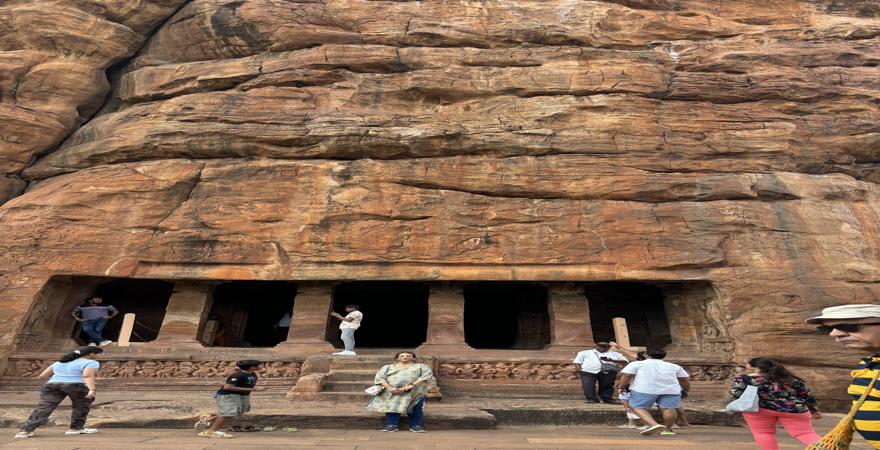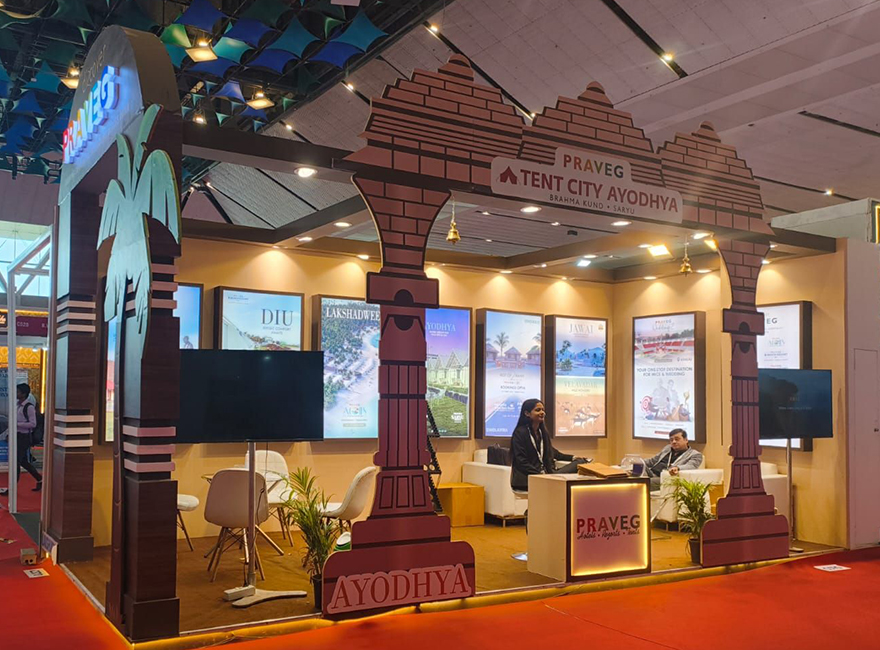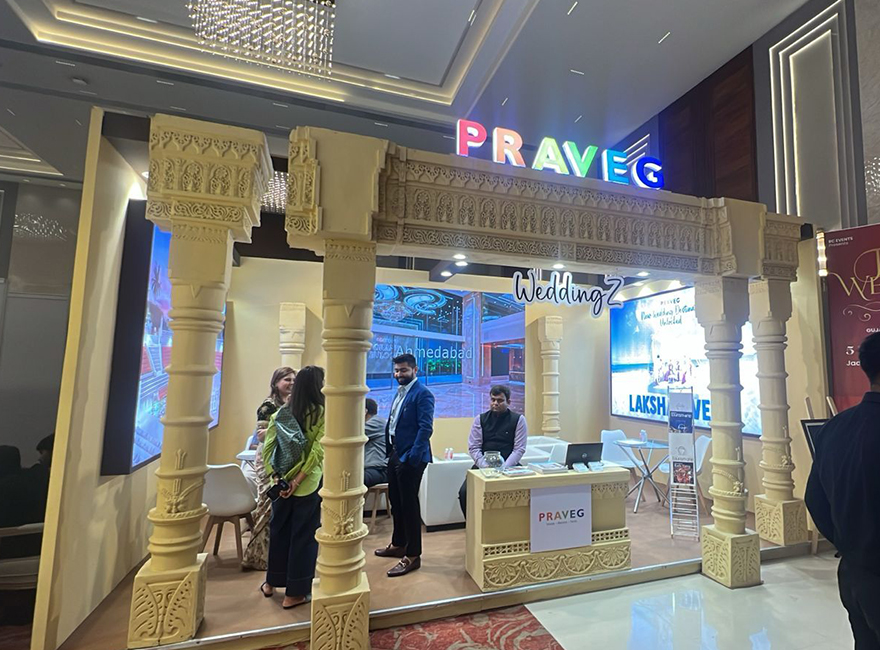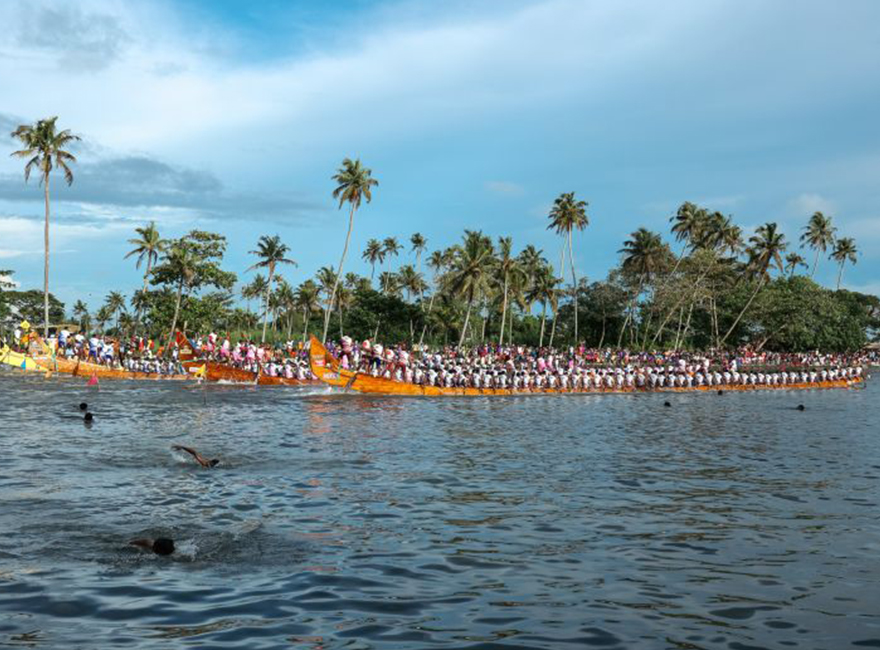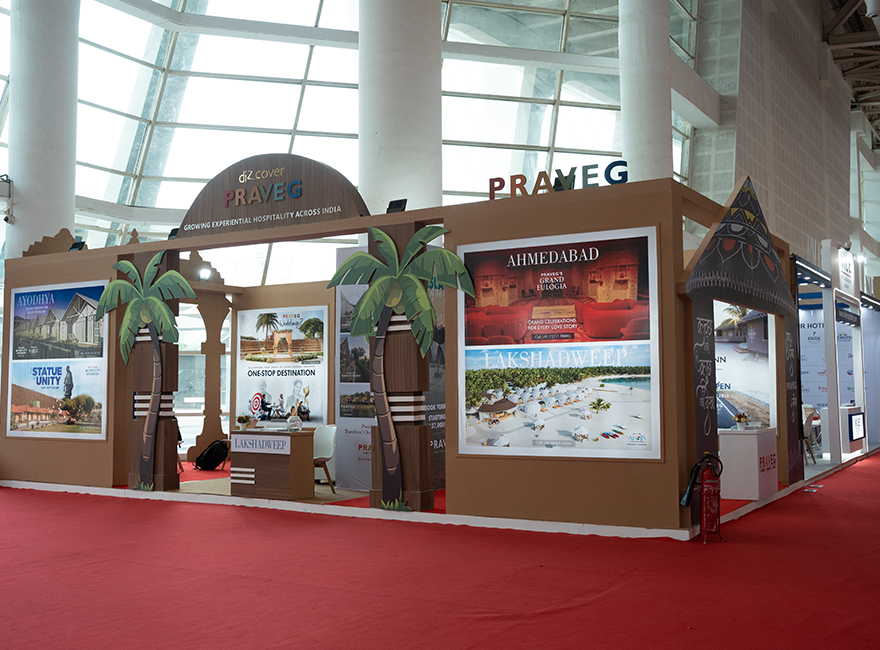School textbooks were likely our first introduction to the Chalukyas, an ancient dynasty that once ruled large parts of South India. Now, as we began exploring places near Bengaluru, we came across Badami—at least a 7-8-hour drive, but that did not deter us. Having explored the more popular destinations like Hampi and Mysore, we were keen to go off the beaten path. And so, we (a friend and her husband, and a driver for part of the trip) set out early one September morning. The hiccups on the way, with roadblocks like rallies, will take an entire essay, so let’s skip that and reach Badami. (And yes, it is better to carry eatables because, after the early breakfast joints, nothing tempting is on the way).
Look for A Good Guide
And so at Badami, do take a good guide: Over the last decade or so, our heritage sites have had good bilingual guides; good, we say, as most of them have done their homework and can answer our questions reasonably satisfactorily. Being a seasoned traveller (both in India and abroad), we think we should do some background reading, as that helps us appreciate the place better. Well, each to his own!
Exploring The Badami and Its Rich Culture
Badami, also known as Vatapi (remember Agastya’s 'Jeerno Bhava'?), was the capital of the Chalukya dynasty in the 6th century. Be ready to walk, sometimes on flat ground, slopes, or steep steps, but each one is worth it. We are struck by the grandeur all around, and we wonder: how are these places chosen, who are the advisors, the architects, the engineers, and the workers? In all our temples, the anonymity of artists is the greatest mystery. Occasionally, we find mention of the patrons (sponsors, we call them today), but that too is more the exception than the norm!
Key Numerical Data
- 18 arms on the Nataraja sculpture, representing 81 dance mudras.
- 7.75 feet (2.36 meters): height of the Harihara sculpture in Cave 1.
- 64 steps: ascent from Cave 1 to Cave 2.
- 1,300 years: age of recently discovered Badami Chalukya temples in Telangana.
- 6th–8th centuries CE: period of cave construction.
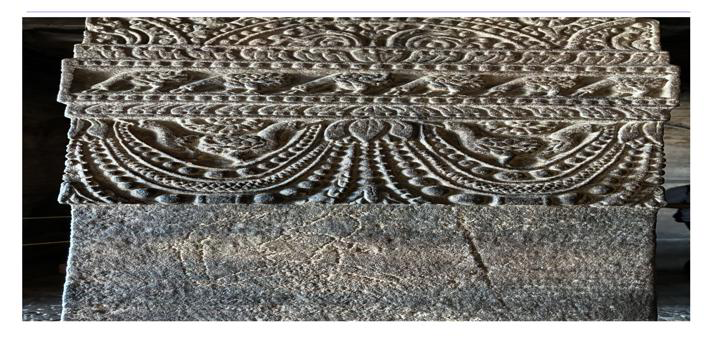
Caves Near Malaprabha River
On the banks of the Malaprabha River (about 5 km away) stand the caves between two mountain cliffs. Later, we walked down to the Agastya Teerth too—a picturesque man-made lake. Carved out of soft sandstone, only one cave has a definite date mentioned—Saka 500, which makes it 578-579 CE. With both Nagara and Dravidian styles intermingling, we can see both Jain and Hindu deities. The structure is almost similar, with a verandah entrance, which we reach after climbing a flight of steps. Of course, nothing is left undecorated, and each cave has at least one prominent sculpture, ideal for the selfie- crazy Gen Z visitors.
Caves 1
So, among the many Hindu deities, Cave 1 has an imposing Nataraja (Shiva in the dancing pose) with 18 arms. Our guide explained in detail various points of significance of the arms, both from a scientific point of view as well as mudras of classical Indian dance and their Natya Mudras. The variety of sculptures also points to the religious faith of the period, as we see Shiva and Ganesha as well as Mahishasuramardhini slaying the buffalo demon.

Each one of these sculptures demonstrates an incredible sense of symmetry, achieved in an era without modern engineering tools. As we paused in front of each one, we felt dwarfed by both the enormity of the sculptures and the Bhakti (devotion) that must have inspired and propelled these simple people into creating awesome pieces. We have seen images of Ardhanariswara, which are relief sculptures, but more amazing was the almost 3-metre-tall sculpture of Harihara—a fused image of half-Shiva and half-Vishnu and their consorts Parvathi and Lakshmi. Our guide interpreted these as the philosophy of the Chalukyas about the equal stature given to both men and women by the kings. Of course, each sculpture also has decorative borders carved. Don’t forget to look up at the ceiling, where there are couples in courtship as well as erotic poses. We remember reading somewhere that all our temples depicted human life, where sex and procreation are also an intrinsic part. Khajuraho and Konark came to the mind.
Cave 2
After exploring Cave 1, we were overwhelmed by the intricate details, the beauty, and the sheer scale of the sculptures. But common sense said we had to move on to the next cave. We had to walk and climb quite a few steps to reach Cave 2, which is dedicated to Lord Vishnu. We saw Vishnu here in his various avatars, the largest being in his Trivikrama form. There were some colour traces on the walls and the ceiling; the guide told us that they indicated there were frescoes at some stage in the past. Some art historians have pointed out similarities with the sculptures of the Ellora Caves. We were not at all willing to walk out, as there seemed to be so much more to see, admire, and understand.
Cave 3
Dedicated to Vishnu, with frescoes still visible on the ceiling, a lotus medallion on the floor, and a ceiling mural of Brahma, with reliefs of many Vedic gods on the ceiling, Cave 3 is the largest and has epigraphs indicating that this cave temple was inaugurated on 1st November, 578. This well-preserved cave shows Vishnu in many avatars, but more interesting is that the clothing and cosmetics in each sculpture give us a picture of the culture of those times.
Caves 4
Cave 4 can be called a Jain cave as it is dedicated to the Tirthankaras. Believed to have been constructed later, there are many theories about the exact timeline. Maybe, additions were made later, is another theory. The Tirthankaras are in various poses which help us identify them immediately—Bahubali, Parshvanath, Mahavira, Gautama, etc. There is a 12th-century Kannada inscription too.
Visitor Statistics
- Annual Visitors (2024): 476,245 people.
- Peak Recorded Visitors: 559,753 in 2018.
- Lowest Recent Footfall: 172,259 in 2021 (likely due to pandemic restrictions).
- Average Annual Visitors (2008–2024): 431,521.
Summing Up
In addition to these numbered caves, there are many more, but we took our guide's advice and walked to the Bhutanatha Temple, by the side of a lake called the Agastya Lake. The view of the four caves we had already visited looked amazing from this angle. We couldn’t help but marvel at the vision of the rulers who gifted such timeless heritage to future generations. To truly appreciate Badami’s grandeur, one must also visit Aihole and Pattadakal—completing the Chalukyan architectural triangle.

